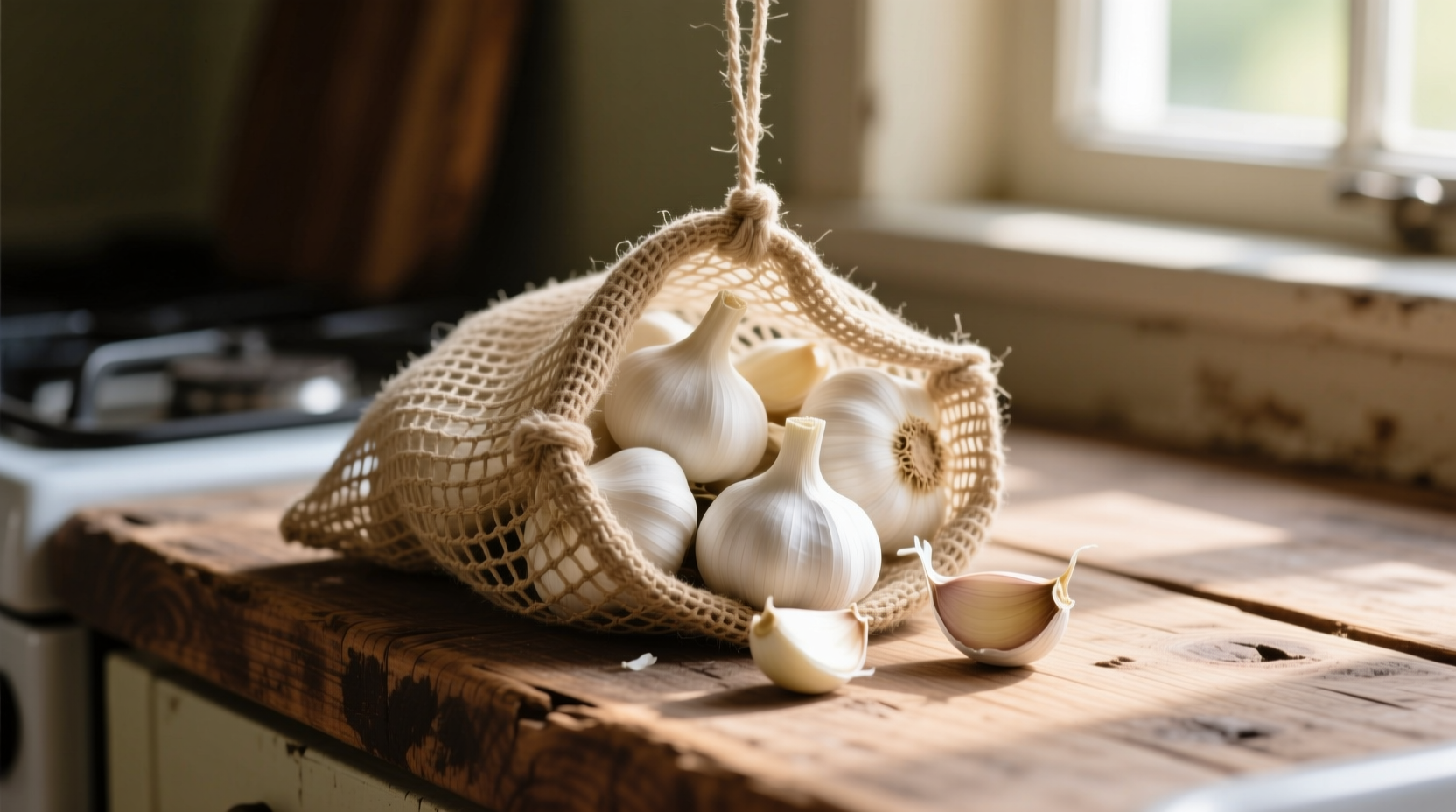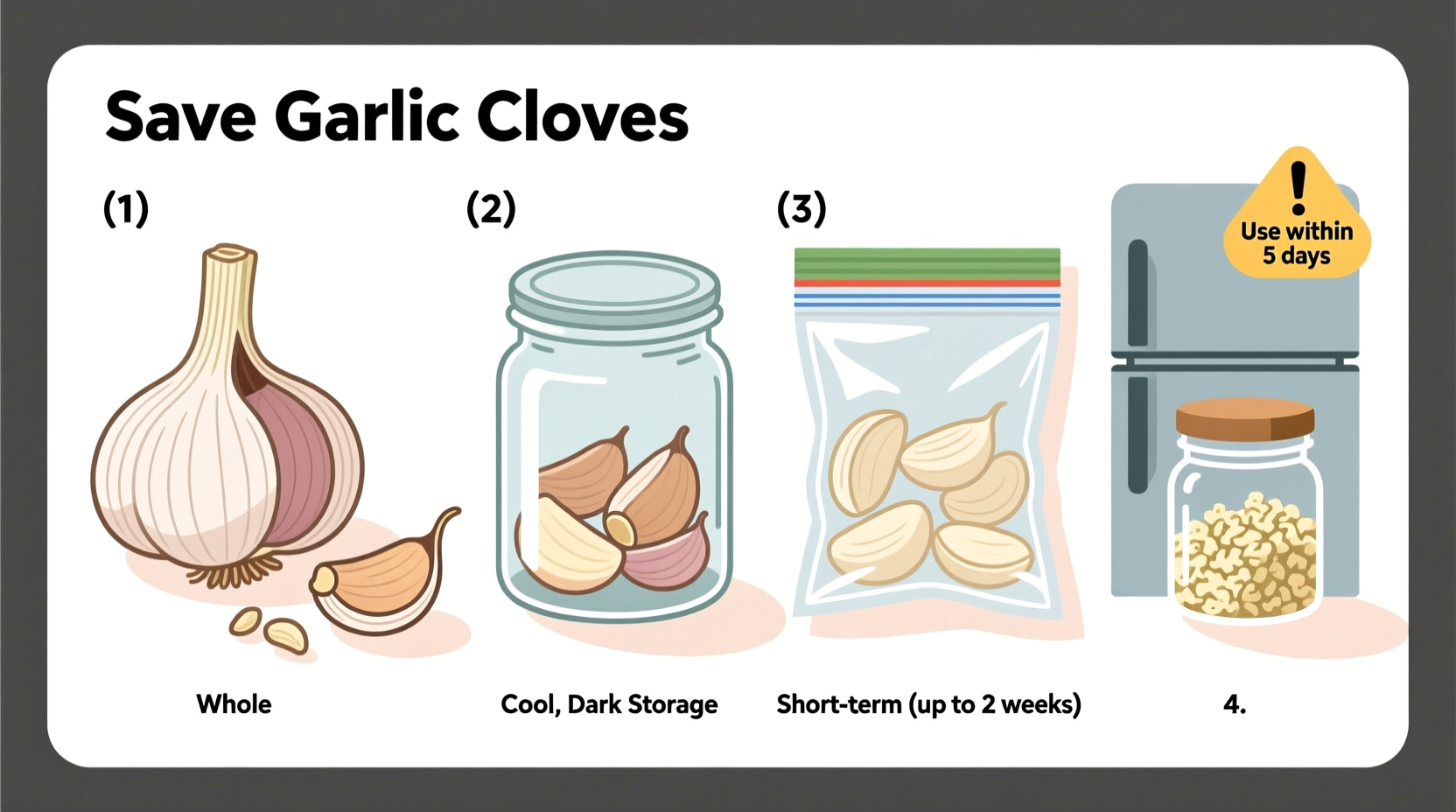Wasting precious garlic shouldn't be part of your cooking routine. Whether you've scored a bulk deal at the farmers market or simply want to maximize your grocery investment, proper garlic preservation keeps this essential ingredient flavorful and ready for action. Professional chefs and food scientists agree that understanding the right storage method for your specific needs transforms how you use garlic in everyday cooking.
Why Proper Garlic Preservation Matters
Garlic begins deteriorating the moment it's harvested. According to USDA post-harvest guidelines, improper storage causes garlic to sprout, develop mold, or lose its characteristic pungency within weeks. Cornell University's food science department confirms that maintaining proper temperature and humidity levels slows enzymatic reactions that degrade garlic's quality. When stored correctly, garlic maintains its allicin content - the compound responsible for both its distinctive flavor and health benefits.
The Room Temperature Method: Simple & Effective
For immediate use (2-4 weeks), room temperature storage works best when done properly:
- Keep garlic in a cool, dark location away from direct sunlight
- Use breathable containers like mesh bags, wicker baskets, or terra cotta pots
- Maintain 60-65°F (15-18°C) with 60-70% humidity
- Never store in plastic bags or sealed containers
This method preserves garlic's natural dormancy. The University of California's agricultural extension notes that storing garlic near heat sources like stoves or ovens accelerates sprouting. Whole bulbs stored this way typically remain fresh for 3-4 weeks, while individual cloves last 7-10 days after separation.

Refrigeration: When It Makes Sense
Contrary to popular belief, refrigeration isn't ideal for whole garlic bulbs as cold temperatures trigger sprouting. However, peeled cloves benefit from refrigeration when properly prepared:
- Peel cloves completely
- Place in an airtight container with a paper towel to absorb moisture
- Store in the main compartment (not the crisper drawer)
This method keeps peeled cloves fresh for 7-10 days. The FDA warns against storing raw garlic in oil at room temperature due to botulism risk, but refrigerated garlic-in-oil mixtures remain safe for up to 4 days when stored below 40°F (4°C).
Freezing Garlic: Long-Term Flavor Preservation
Freezing preserves garlic's flavor compounds remarkably well. Food science research published in the Journal of Agricultural and Food Chemistry confirms frozen garlic maintains 90% of its allicin content for up to 12 months. Three effective freezing methods:
| Freezing Method | Preparation | Shelf Life | Best For |
|---|---|---|---|
| Whole cloves | Peel, flash freeze on tray, then bag | 12 months | Roasting, whole clove recipes |
| Minced in oil | Mince, mix with oil, freeze in portions | 6 months | Sauteing, sauces |
| Garlic paste | Blend with minimal oil, freeze in ice cube tray | 8 months | Quick cooking, marinades |
For oil-based methods, use just enough oil to coat the garlic - excess oil can become rancid. Frozen garlic can be added directly to cooking without thawing.
Safe Oil Preservation: Flavor Infusion Without Risk
Preserving garlic in oil requires careful handling to prevent botulism. The National Center for Home Food Preservation states that properly acidified garlic in oil remains safe when:
- pH is maintained below 4.6 through vinegar addition
- garlic is fully submerged
- mixture is refrigerated below 38°F (3°C)
- used within 4 days
For longer storage, freeze oil-infused garlic portions. Never store garlic in oil at room temperature, even with refrigeration claims from some commercial products.
Dehydrating: Creating Shelf-Stable Garlic
Dehydrated garlic offers indefinite shelf life when properly stored. The dehydration process concentrates flavor while removing moisture that causes spoilage. Two effective methods:
- Air drying: Slice cloves thinly, arrange on screens, dry in dark, well-ventilated area for 2-3 weeks
- Oven drying: 140°F (60°C) for 6-8 hours until brittle
Once completely dry, store whole dehydrated cloves in airtight containers with oxygen absorbers. For powder, grind in spice grinder and store in dark glass jars. Properly stored dehydrated garlic maintains quality for 1-2 years, while powder lasts indefinitely.
Avoid These Common Garlic Storage Mistakes
Even with good intentions, these storage errors compromise garlic quality:
- Storing in the original mesh bag from the store - commercial bags often trap moisture
- Keeping near onions - onions release gases that accelerate garlic sprouting
- Refrigerating whole bulbs - triggers premature sprouting
- Washing before storage - introduces moisture that promotes mold
Choosing Your Best Preservation Method
Your cooking habits determine the ideal preservation approach:
- Daily home cooking: Room temperature storage with weekly replenishment
- Meal preppers: Frozen garlic paste in portioned cubes
- Special occasion cooks: Dehydrated garlic for long-term pantry storage
- Professional results: Fresh garlic for immediate use, frozen for backup
Remember that each preservation method slightly alters garlic's flavor profile. Frozen garlic develops a milder taste, while dehydrated garlic concentrates pungency. Understanding these nuances helps you select the right preserved garlic for each culinary application.











 浙公网安备
33010002000092号
浙公网安备
33010002000092号 浙B2-20120091-4
浙B2-20120091-4